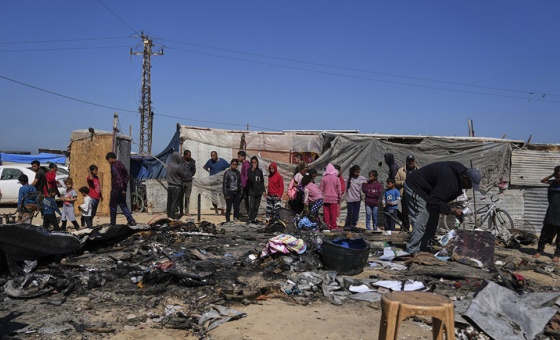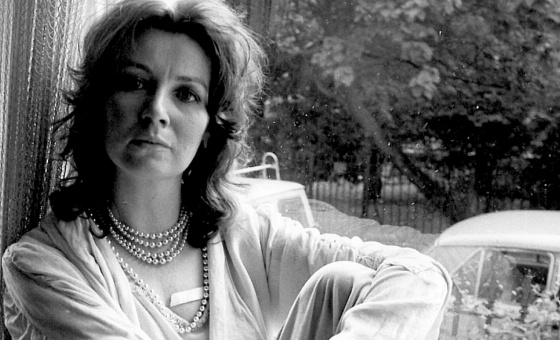This is the last article you can read this month
You can read more article this month
You can read more articles this month
Sorry your limit is up for this month
Reset on:
Please help support the Morning Star by subscribing here
Louis Kahn: The Power Of Architecture
The Design Museum
London SE1
5/5
When Muzharul Islam, nestor of Pakistani architecture, was given in 1960, the task of designing and building the Jativo Sangsad Bhaban (National Assembly House) in Dhaka he called first on Alvaar Alto, then Le Corbusier to lead the project. They couldn’t commit so Islam turned — prophetically — to Louis Kahn.
Kahn — who was born into a poor Jewish family in Estonia — emigrated with his parents to Philadelphia at the age of five. The family was so poor that they could not afford pencils and young Louis made his own charcoal sticks from burnt twigs to earn from his drawings.
He had been professor of architecture at Yale and, when Islam called, he was teaching at his own alma mater, the University of Pennsylvania.
The collaboration, which was to last until Kahn’s death in 1974, began therein with one of the most iconic buildings of the 20th century.
Kahn was given a rigorous neoclassical training and appeared — at least early on — to be attracted to and inspired by remnants of ancient architectural monuments. It has been said that he used to “wrap ruins around his buildings” — a look that in anecdote apparently saved Jativo Sangsad from bombing during the war between east and west Pakistan in 1971.
His influences were numerous — the US arts and crafts movement, primary geometric shapes — the cylinder, the sphere and the cube, triangles and circles. The theories of Buckminster Fuller, whose geodesic dome inspired Norman Foster’s famous roof over the British Museum’s great court, had a lasting impact as did new technologies — he was a precursor in the usage of precast concrete components for rapid on-site assembly.
The Richards Medical Research Laboratories, University of Pennsylvania, where he pioneered the technique was, at the time of its construction, a focal point for architects from around the world.
This child-like curiosity led to the design of one of the greatest building never to be built — the City Hall Tower in Philadelphia — a spectacular edifice spiraling into space like the double helix of the Francis Crick and James Watson’s DNA sequence it had been inspired by.
Far ahead of its time — it draws awe even today — it had a momentous impact on the Metabolists of Japan and their extraordinary clustered tower structures in the 1960s and ’70s. Norman Foster’s more recent triangular-patterned Hearst Tower in New York is also heavily indebted to that design.
A gigantic model of it forms the piece de resistance of this elegant exhibition that packs a surprising informative punch — visual, textual and audio-visual with the profession celebrities like Frank Gehry, Renzo Piano, Peter Zumthor and Sou Fujimoto paying revelatory tributes.
Kahn’s deference for antiquity meant he cultivated sensitivity to other aesthetic heritages, which made Jativo Sangsad, with its references to Bengal and particularly the Ganges delta, spellbinding.
The internal illumination by ingeniously designed intake of daylight is fascinating as are the broad vistas that symbiotically liaise the Jativo Sangsad with its surrounding landscape.
This particular care to connect the built environment with its surrounding has its root in his almost renaissance affection for perspective and its role in all things architectural.
This spirit is all-important within the Salk Institute for Biological Studies in La Jolla, California — founded by Jonas Salk who developed the polio vaccine which Kahn designed and built, in the mid ’60s.
Here, the central grand perspective is breathtaking with the boundaries defined by its intriguing, serrated sides.
Unexpectedly perhaps, the exhibition contains a political jewel. Kahn believed architects have an important social responsibility and he collaborated extensively in the 1940s with fellow immigrant German Oscar Stonorov, who was a public housing pioneer in the US.
In 1944 they published You and Your Neighbourhood: A Primer for Neighborhood Planning — a fascinating step-by-step guide into the organisation of community influence on local housing politics, campaigning, agitating, educating, et al, which visitors can browse turning through the pages of its interactive digital displays.
Kahn died of a heart attack at Pennsylvania Station, New York, on his return from India in 1974. He was broke at the time, but the treasure trove of his ideas offers endless riches.
Until October 12 2014.





